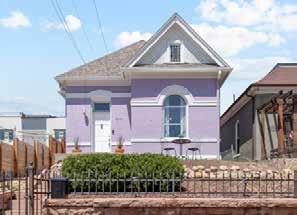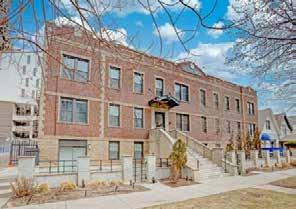100 Artists to Gather for The Highlands Art Festival

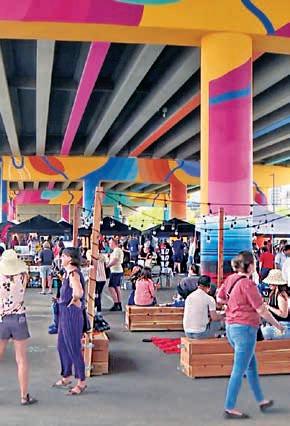


100 Artists to Gather for The Highlands Art Festival



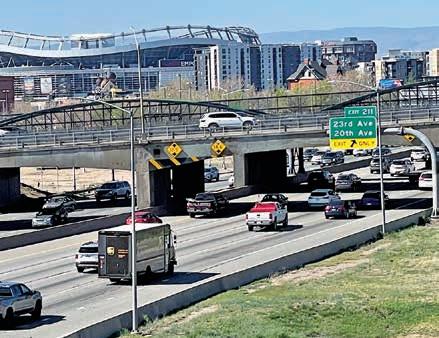 By Gannon Rothman
By Gannon Rothman
POLITICS
Mayoral Candidates Take Aim at Run-Off Election

PAGE 5
COMMUNITY
Dog Park with Self-Serve Beer Taps Coming to Jefferson Park PAGE 7
By Eric HeinzNorth Denver residents banded together to raise more than the target goals for fundraisers to benefit the families of two American Elm employees who were killed in a recent shooting.
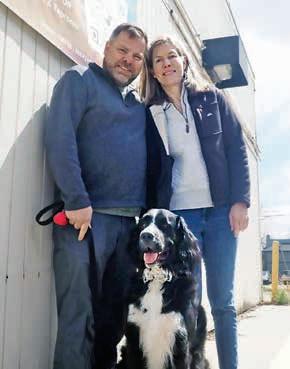
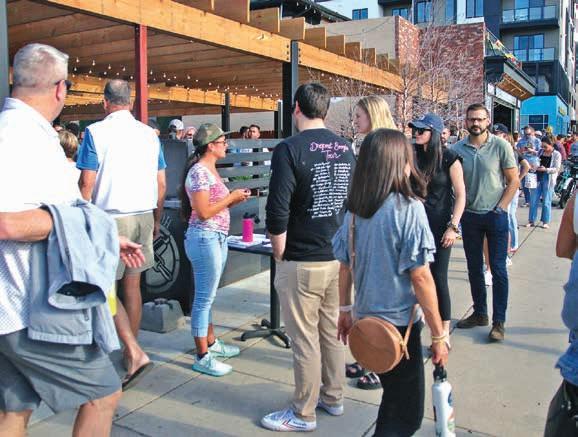
The victims of the shooting, reported by the Denver Police Department as Emerall Vaughn-Dahler, 34, and Ignacio “Nacho” Gutierrez Morales, 58, were at the restaurant at 4132 W. 38th Ave. on April 24 when they were shot to death.
DPD has not yet released more information on the incident. Metro Denver Crime Stoppers increased its reward from $2,000 to $5,000 recently for any information leading to the whereabouts of the suspect.
A silent auction and fundraiser was hosted by Hops & Pie to support the families of the victims, which raised at least $35,000, but possibly more. A GoFundMe page, which had a goal of raising $100,000, has exceeded $150,000.
American Elm owner Bob Reiter sent out a community letter following the fundraiser.
“I was overwhelmed by the outpouring of love from our industry and community,” Reiter wrote. “The warmth and compassion on display was truly heartening and I cannot thank you enough for coming together to support our team and the victims’ families. With your help, we raised more than $35,000 in just a few hours. What a truly remarkable accomplishment and incredible show of resilience.
“It fills me with hope and joy to be a part of a community where my fellow business owners have rallied together in the face of this senseless act of violence,” Reiter continued.
“Your kindness and generosity in support of Nacho and Emerall’s families, as well as our team, is some-
thing I will never forget. Thank you for being a shining example of what makes Denver and the Highlands so special.”
According to the organizers of the GoFundMe page, Vaughn-Dahler and Gutierrez Morales were described as “pillars of the American Elm family and will be so greatly missed by their families, loved ones and colleagues.”
Vaughn-Dahler is survived by her 12-year-old child and her husband, Andrew. She was born in St. Johns, Arizona, and raised across St. Johns, San Diego and Arvada.

According to the organizers, she spent the entirety of her career in the Denver hospitality scene and joined the American Elm team in 2021 as a server, working her way up to become general manager.
“She was earnest, hard working and compassionate, had a kind and gentle spirit,” the GoFundMe post reads. “Above all she was a loving mother, selfless and accepting of all, no judgements.”
Gutierrez Morales was “extremely well respected within Denver’s culinary community,” the organizers stated.
He worked for years at Guard & Grace and Highland Tavern before coming to American Elm as a prep cook. Born in Puebla, Mexico, he is survived by his three adult children.
“Nacho was very caring, humble and loved by many,” the organizers stated. “If he had a chance to help someone he was always there. He was quiet and always there to listen.”
The restaurant will reopen May 18, for service seven days a week, for happy hour, dinner and weekend brunch.
Anyone with information regarding the April 24 incident is asked to call Metro Denver Crime Stoppers at 720-913-7867. Callers can access the line any time of day to remain anonymous.
Despite being a gateway to downtown Denver, the bridge on Speer Boulevard is most notable for its shattered concrete and exposed rebar.
In a stakeholder meeting that was held in December 2021 with the Colorado Department of Transportation (CDOT), the deck conditions were given a poor rating, with load capacity and clearance not meeting the state’s standards.
Since then, CDOT has been looking into replacing the bridges at 23rd Avenue and Speer Boulevard. A list of proposed improvements has been added that includes upgrades to pedestrian and bicyclist safety, higher clearance and improved mainline flow coming from I-25.
So far, preliminary designs are the only way to see what the project will address.
Constructed in the 1950s, the two bridges have the lowest clearance heights on all of I-25. This creates issues for drivers with vehicles too tall to go under these bridges, forcing them to divert around traffic and away from the regional highway.
The December meeting also addressed several overpasses that reported the highest mainline incidents for on- and off-ramps coming from north and southbound I-25. The bridges with the most incidents reported included Speer Boulevard and 23rd Avenue. Meanwhile, growth around I-25 is expected to increase to 15% through 2040, according to CDOT’s report.
Jefferson Park United Neighbors (JPUN) has been interested in the project potentially affecting the neighborhood, and the organization’s president has been trying to get CDOT’s attention for some time.
“It’s just not a Jefferson Park issue. It’s a gateway issue. There is a need to utilize that transportation option,” said Michael Guiietz, president of JPUN. “The city can’t preach that there has to be density without providing multi-mobile transportation options for residents.”
CDOT’s timeline for the project is not set in stone either, with construction possibly starting this summer. Presley Fowler, the Region 1 deputy communications manager for CDOT, reminded people that this project
See BRIDGES, Page 14
720-248-7327
P.O. Box 11584, Denver CO 80211 DenverNorthStar.com
PUBLISHER: David Sabados
EDITOR: Eric Heinz
ART DIRECTOR/

GRAPHIC DESIGNER: Melissa Levad-Feeney
ADVERTISING SALES: David Walsh
BUSINESS MANAGER: Emma Donahue
NEWS INQUIRIES:
For news inquiries, email News@DenverNorthStar.com
ADVERTISING INQUIRIES:
For advertising inquiries, email Ads@DenverNorthStar.com.
GET INVOLVED!
You can make a contribution, sign up to receive email updates and submit events for our community calendar at DenverNorthStar.com.

DISTRIBUTION:
The Denver North Star prints over 34,000 copies each edition and is mailed free of charge to homes and businesses in North Denver. Additional copies can be found at local businesses in the community. New editions are published on the 15th of each month.
LET’S BE SOCIAL @DenverNorthStar
The
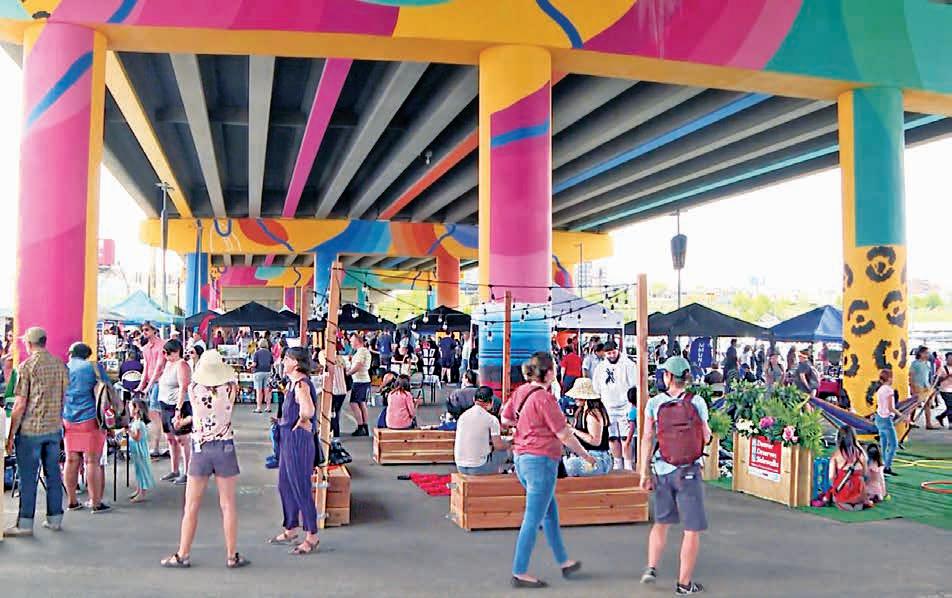 By Miranda Ericksen
By Miranda Ericksen
Jaw dropping mountain contemporary home built by MAG Builders, known for their exceptional craftsmanship in Denver’s most popular places. With designer finishes that combine both style and warmth, it achieves the perfect balance. Enjoy intimate evenings soaking in the Hot Springs Salt Water Hot Tub, or entertain guests upstairs where you’ll find breathtaking views of the Denver Skyline from the rooftop.



Landon Pasley - Realtor - Mentor, NAV Real Estate (720) 584-6735 | landon@navcolorado.com

The reinvigoration of the Sun Valley Viaduct continues to gain momentum with the third annual Sun Valley Viaduct Night Market scheduled for May 20.
The Market will take place from 4-10 p.m. at the south end of Empower Field under the Colfax Viaduct, west of Raices Brewing Company and east of the Latino Cultural Arts Center at 2705 W. Colfax Ave.
In addition to local vendors, artists and food trucks, there will be beer available from Raices Brewing and a diverse lineup of performances. Entertainment will include mariachi bands, dance performances, live music and DJ sets.

Lawn games and family friendly activities are also on the agenda for the event. Admission to the event is free and supported by what’s called a “P.S. You Are Here Grant” provided by the city.
In 2022, Denver Arts & Venues agreed to invest $100,000 in funding for projects to be implemented in 2022-2024. P.S. You Are Here Grants of up to $10,000 are available to individuals, nonprofit organizations and for-profit businesses to build innovative, temporary projects that are rooted in community collaborations.
Glenn Harper, founder of the Sun Valley Kitchen and Community Center, has worked with the West Denver Renaissance Collaborative on creative solutions to prevent displacement of the Sun Valley community and promote the hundreds of small businesses in the west Denver area.
The collaborative includes representatives from the Far East Center, BuCu West and Little Saigon, in addition to Sun Valley Kitchen and Community Center.
For example, businesses in the area can participate in a West Denver Gift Card, which patrons can purchase and then use at whichever participating business they wish. The collaborative also works together on the annual Green Chili Festival on Morrison Road and Lunar New Year celebrations to continue the celebration of cultural diversity in west Denver.
Food has been a central aspect of the Sun Valley Kitchen and Community Center, which has been open for 10 years. The organization uses an old grocery store space to allow equitable access to food, employment and cooking classes.
Additionally, there are youth professional development programs and athletics training and mentorship available. Harper and
his team recognize the growing need to support citizens in the west Denver area who have been priced out of their homes through increases over the past decade.

The Viaduct Night Market came about through an expressed need by the members of the community to celebrate the culture and diversity of the neighborhood through food, fun and music. The annual event is “the catalyst for a longer term vision of semi-permanent international markets and use of the Viaduct space outside of tailgating for football games” said Harper.
Previous Sun Valley Viaduct Night Market events included a race track for strider bikes, a pho eating contest and numerous lawn games for families and the community to enjoy together. Denver City Councilwoman Jamie Torres of District 3 stated that it was “about transforming people’s economy, their business center and their ability to market themselves.”
With over 20 local food vendors, the event allowed the community to “tap into the flavors of west Denver, right here,” Torres said.

This year, there will be a yet-to-be-disclosed food eating contest and four featured chefs from Sun Valley, representing Vietnam, Somalia, Jordan and Colorado.
“Activating the space is really exciting, we have one permanent mural, recently installed really cool lighting features and will be unveiling a second permanent mural during this year’s event,” Harper said.
He said he would love to see more events in the space, but stated that the biggest challenge is working around the vibrant and busy Empower Field schedule of events.
The Sun Valley Community has been undergoing a revitalization throughout the past few years.


In 2016, Denver Housing Authority was awarded a $30 million Choice Neighborhood Initiative Implementation Grant to implement the Sun Valley Neighborhood Transformation Plan. The plan includes the replacement of 333 obsolete public housing units that will create over 960 mixed-income units in four phases.
The long-term vision is that the Sun Valley Viaduct Night Market will be an annual event that will continue to inspire residents of west Denver to embrace the diversity of the neighborhood as the Neighborhood Transformation Plan continues to take shape.
Avacant parcel of city-owned land in the Regis neighborhood at the corner of 48th Avenue and Julian Street will become the site of a new community garden and food forest this year.
Denver Urban Gardens (DUG) has held several community meetings at the nearby Wat Buddhawararam Buddhist Temple and is currently receiving community input to design the project’s first phase. Construction is slated to begin in September.
Three smaller additional parcels along 48th Avenue between Julian and Hooker streets will be incorporated into the project over the next couple of years.
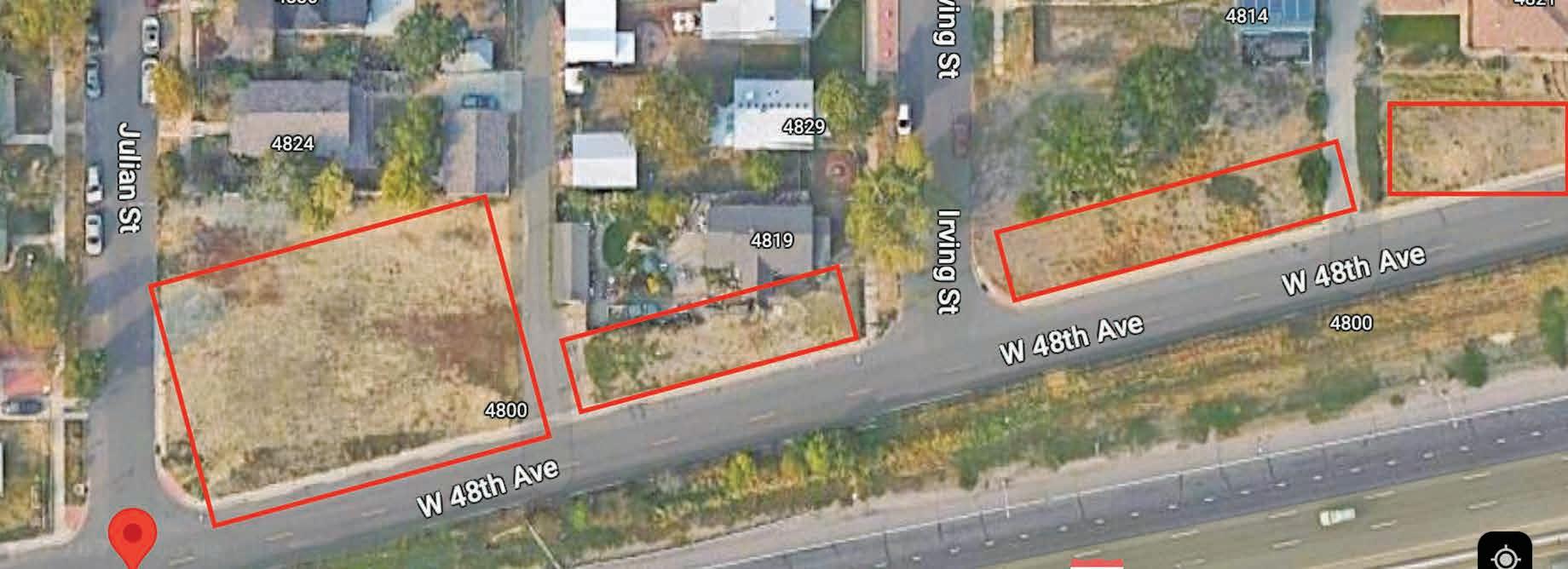

The four parcels are owned by the city and managed by Denver Parks & Recreation. According to Berkeley Regis United Neighbors’ (BRUN) Marie Edgar, the parcels were originally part of Rocky Mountain Lake Park but have remained in a sort of land-use limbo since I-70 construction separated them from the park back in the mid-1960s.

At a recent community meeting, Lara Fahnestock, DUG’s director of garden operations, described possible designs and features for the garden and invited volunteer leaders from two nearby community gardens (Academia Sandoval School Community Garden and the Shoshone Community Garden) to speak about their experiences.
They shared tips for building a sense of community among gardeners, advice on garden design and ideas for supporting people new to gardening.
In addition to reaching more community members for input and participation, DUG would like to form a three-person garden leadership committee for the site.
Creighton Hofeditz, DUG’s director of permaculture and perennials, said a food forest consists of food-bearing trees, bushes and vines that grow at varying heights, maxing out at around 15 feet. Signage identifies the plants and helps the public determine when the fruits, nuts and berries are ready to be harvested.
Hofeditz said DUG selects trees suited to Colorado’s climate and the urban setting. On this site, fruit trees could include apple, pear, plum, tart cherry, persimmon and hazelnut. Blackberries, boysenberries, elderberries and currants are also possibilities.
Additionally, Hofeditz pointed out that the sloping parcel flanked by an alley and street is an ideal candidate for redirecting stormwater for use by the food forest.
DUG constructed six food forests last year and plans to add 14 more — including the one at 48th Avenue and Julian — this year.
Fahnestock and Hofeditz said the garden’s first phase could include up to 16, 12-by-12-foot garden plots for community members and approximately 20 trees. Other features could include a shade structure, picnic benches, pollinator areas, compost bins and a tool shed.
Councilwoman Amanda P. Sandoval attended the May 4 meeting and encouraged attendees to each tell five neighbors. Her office has been working on the community garden idea for over three years, and she said she looks forward to seeing the parcels put to meaningful use for the neighborhood.
Denver’s Department of Transportation and Infrastructure (DOTI) will construct a new 6-foot attached sidewalk along the perimeter of the property this summer.
The dilapidated timber fence across the street from the site, intended to shield nearby residents from I-70 traffic noise, has fallen down in several areas. Colorado Department of Transportation (CDOT) received funding in 2021 to replace the timber walls with precast concrete wall panels as part of its I-70 Noise Wall Replacement in Denver project. The section of noise wall nearest the community garden is planned for 2024.
To receive updates on the garden project and to inquire about a plot or volunteering with the garden or food forest, send an email to 48thandjuliancommunitygarden@ dug.org.
Since the Colorado Department of Health and Environment officially terminated its COVID protective orders in February, we at The Denver North Star have discussed with some local breweries the pandemic's effects on their businesses and what they look forward to now that normal operations have resumed.
Although breweries for the most part have been able to operate at full capacity in Denver for some time now, with the mask mandates being dropped in early 2022, several in the area have either closed, relocated or had a change in ownership.


Flyte Co. Brewing Manager Lee Ann Hahne said the pandemic orders from the city hit not long after they had opened their Berkeley neighborhood location.

“We had to shut down one week after our one-year anniversary,” Hahne said. “We were closed to the public for about three months. During that time, we opened up our garage and sold to-go beer … or we would deliver it to them if they were in a 5-mile radius. After that time, we pretty much did everything that Denver told us to do.”
Hanhe said it was “funny” to see people drinking beer in snow coats when they weren’t allowed to be inside, but the lack of money coming in was no laughing matter, so they had to get innovative.
“We weren't opening until like three o'clock in the afternoon,” Hahne said. “In the front part of our bar, we made it a coffee shop. And then about six months after that, we took another area of the brewery and put in a bagel sandwich shop.”
Chris Bell, founder of Call to Arms Brewing, said additional costs of personal protective equipment (PPE), staff turnover and the lack of business were some of the initial challenges, but there were other issues that hampered operations.
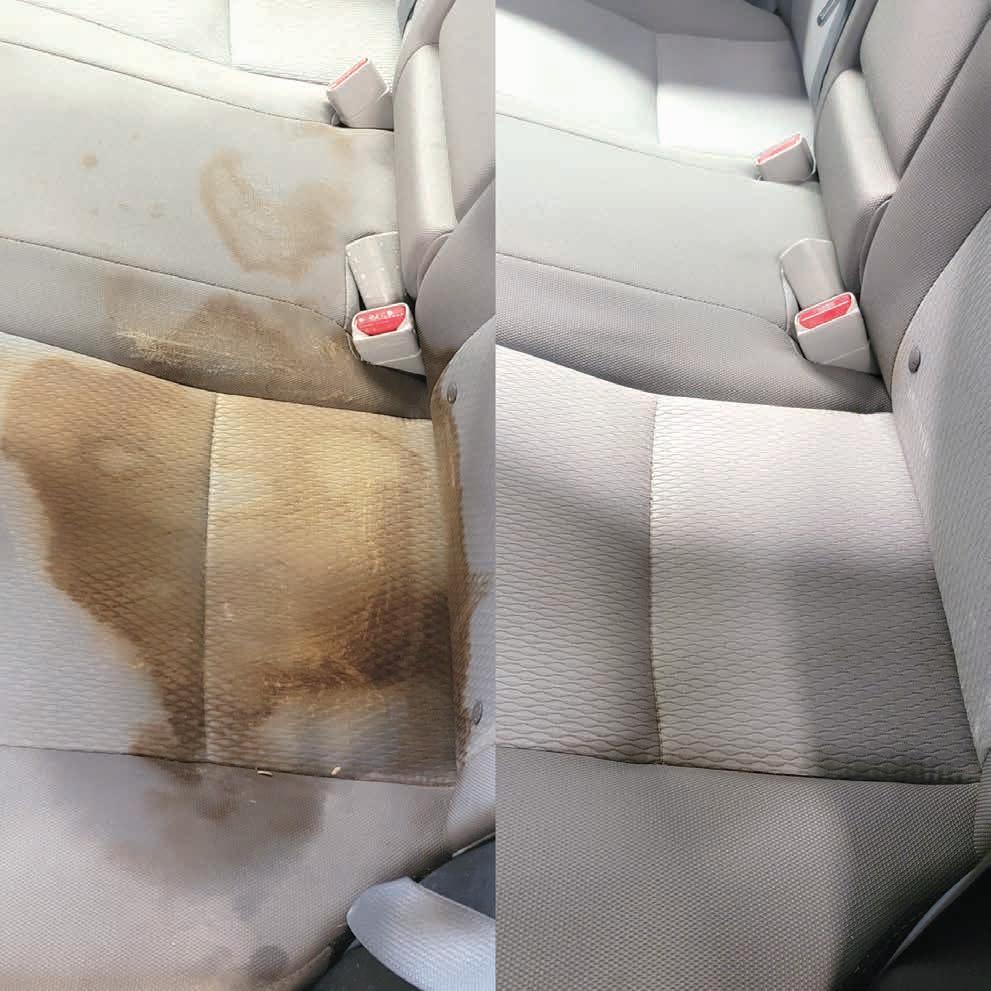
“There were some not-so-obvious ones, like the polarization of the whole thing, and just the general rule enforcement was a huge challenge,” Bell said. “It kind of felt like people yelling at you for denying them beer if they are 18. Even if it was our choice to do everything we did to keep people safe, the negative reviews and berating of employees was one of the worst parts for sure.”
Most businesses during the pandemic, particularly those that relied on in-person foot traffic and other services, had to apply for some kind of emergency loans in order to maintain overhead costs, and Bell said Call to Arms was no different.

“Retention (of employees) has always been something we have prided ourselves on,” Bell said. “While COVID facilitated some of our long-term employees to re-evaluate what they wanted to do and leave, it also facilitated a fantastic new





group of employees.”
Since the return of in-person gatherings, Bell said Call to Arms is looking forward to hosting more events at their 45th Avenue and Tennyson Street location.


family. We purchased products to support local purveyors and started a spinoff concept called Acreage Provisions to solve the increased demand for to-go menus.”
Ingraham said the outdoor space for Stem Ciders provided some respite, particularly when social distancing measures allowed some return to in-person meetings.
“We are thrilled to be able to offer events again and feel like this is the first ‘real’ year for us after COVID,” Ingraham said. “We’ve shed most of the service changes required during the pandemic. For us, full service and a full restaurant is where we thrive. We need the volume to support our team and steady business to support our growth.”
Some of those service changes included not requiring people to use a QR code menu. Restaurants had adopted contactless service changes during the pandemic so as not to spread the virus. However, the Centers for Disease Control and Prevention has since updated its findings that the risk of spreading the virus through surface contact is “low.”


Sarah Ingraham of Stem Ciders in RiNo said furloughing employees was one of her biggest challenges, in addition to supply chain issues that in some cases doubled ingredient prices.
“Another challenge was how we approached our service to guests, as our menu wasn’t built for to-go,” Ingraham said. “We could sell Stem Ciders all day, but people wanted creative dishes to feed their
Bell said Call to Arms changed its business model during the pandemic by canning with a new company, and then they decided to get into distribution.
“Which has been a fun new challenge,” Bell said. “While we are familiar with it from other breweries we have worked in, it's always different when it's your own. We’re excited to see what's next.”
“Retention (of employees) has always been something we have prided ourselves on,” Bell said. “While COVID facilitated some of our long-term employees to re-evaluate what they wanted to do and leave, it also facilitated a fantastic new group of employees.”
– Chris Bell, founder of Call to Arms Brewing
Denver’s next mayor comes down to the remaining candidates in the June 6 run-off election, former Mayor John Hickenlooper’s chief of staff Kelly Brough and former Colorado state Senator Mike Johnston.

Several issues The Denver North Star recently discussed with the candidates included homelessness, housing, public safety and addressing the struggles small businesses face.
Brough said part of her plan to address homelessness includes expanding sanctioned campsites, like the ones that are run by the Colorado Village Collaborative (CVC) at various sites throughout the city.
“My priority as mayor is to save lives and improve the living conditions, as quickly as we can,” Brough said. “To do that, what I would first do is sanction safer locations and get people to those locations as quickly as we can.”
Brough said she acknowledges permanent shelter is critical for everyone, but without the available housing, it would be better to expand the campsites rather than let the unhoused community continue to sleep wherever they can find a space.
“Once we have a safer site for everybody, I would say everyone has to be in those sites and we don’t have people, frankly, trying to fend for themselves in our city without support and help,” Brough said. “We know that's not working for them.”
Johnston said building more tiny homes, like the villages found in the Elyria neighborhood that are also managed by CVC, would also be a suitable method of temporary housing.
“You want to have the wraparound services on those sites, the teams that can provide both mental health support, addiction treatment, workforce training, some counseling and security,” Johnston said. “It’s clear that when you provide private, safe, dignified, stable housing like tiny homes or even hotel conversions, people choose (to move to) them voluntarily and in dramatic numbers.”
“I think that also would help us with retention, and I think that’s got to be key for our future because today more people are tipping into homelessness than we’re taking out,” she said.
Johnston said he is focusing on creating more income-restricted housing through various funding sources to make sure rents continue to be affordable for what’s usually 99 years.
“That means you never have to worry at the end of the month that your landlord is going to jack up the rent or that some new owner is going to buy the building and increase the rent.” Johnston said, adding that his plan is to build 25,000 deed-restricted units in the next eight years.
Johnston said this would be possible by using Proposition 123 funding, which was approved by the voters in November to dedicate an estimated $300 million to incomerestricted housing.

A bill to repeal Colorado’s ban on rent control failed in the state legislature, which would have given municipalities the ability to develop some sort of cap on rent, though both candidates stated they did not support rent-control efforts regardless.
The Denver North Star, Regis University, CBS News Colorado and community partners hosted a mayoral debate between Kelly Brough and Mike Johnston on May 11. To watch the video, visit denvernorthstar.com
Both Brough and Johnston said they would like to build tiny home villages near existing encampments to preserve the sense of community the residents have already built.
In trying to keep people in the housing they already have, Brough said she would try to compel landlords to call the city and work something out before evicting a tenant, which she said would actually be cheaper than initiating eviction proceedings.
Another tactic Brough said she would use is master leasing, where a housing authority or organization or government is the lessee and then subleases the units.
Support for small businesses is particularly important to the local shops around north Denver, but there are clear vacancies in some high-profile areas.
Johnston said the city needs to make available more money to support smaller businesses so that they aren’t waiting forever for certain loans.
“We should be the earliest and the fastest dollars into these businesses, not make it an 18-month, cumbersome process,” Johnston said, adding there are BIPOC-owned businesses in Denver that have struggled with getting basic financial support.
“What makes Denver unique is people
want to come here and find things they can't find someplace else, and that is what our local entrepreneurs support,” he added.

Johnston said he would also like to showcase Denver’s small-business profile to local investors who could give them more support.
“Some of the challenges, I think, have to do with the pandemic,” Brough said. “We kind of moved away from the community spending time together, and while we see coffee shops with lots of people in them, I think those gathering spaces are what we were counting on.”
Brough said there may be ways to engage people through hosting events, concerts and giving other opportunities to showcase the businesses local to neighborhoods. She is a former CEO and president of the Denver Metro Chamber of Commerce.
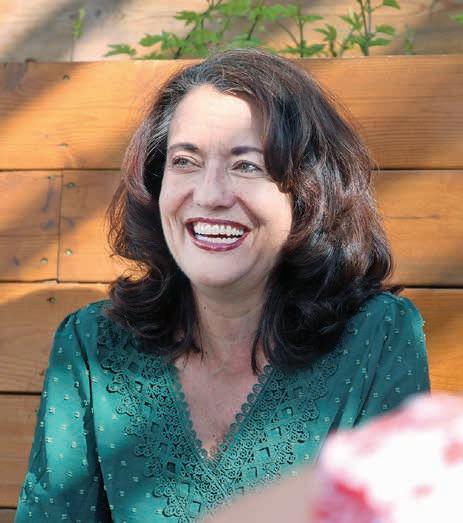
“If we're not going to be in a full recession, we’re in a slowdown, and this is impacting our businesses,” Brough said. “Coming together to explore ways we can all hold on through it is in all of our interest. I did that through the pandemic and had a lot of success supporting the small businesses that I represented.”
Brough said Denver’s current minimum wage is not something she would try to change and said the best way to save people money is by making housing cheaper. Conversely, Johnston said he has supported measures for increases in the state’s minimum wage and that Denver’s “could be increased again.”
Regarding public safety, Johnston acknowledged the mental health and drug abuse issues that have kept people on Denver’s streets. He said for the most severe cases, he would want to transform two pods of Denver County Jail into inpatient mental health and substance treatment centers.
“Those are people that are often, unfortunately, committing crimes repeatedly, and then they're on a revolving door between a couple nights at Denver Health and a couple nights on the street and a couple of nights in jail and back out again,” Johnston said. “People that are otherwise facing being put into jail without services could actually
According to numbers from the Denver Office of the Clerk and Recorder as of May 5, Mike Johnston had raised a little more than $932,000 for his campaign, but another $2.2 million was spent in support of his run, much of that coming from a group called Advancing Denver. Of that, nearly $780,000 was donated by LinkedIn co-founder Reid Hoffman.
Brough had raised about $895,000, with another $1.1 million spent in support of her run, much of that coming from the group called A Better Denver. Of that, The National Association of Realtors contributed about $470,000 to that independent expenditure committee in March.
Of note, Brough was able to get more small donations and therefore received more from the city’s Fair Elections Fund, about $937,000 to Johnston’s roughly $767,000.
Some of the notable endorsements received by Johnston include former Denver Mayor Federico Peña, Colorado legislators former Speaker Terrance Carroll and former Colorado Senate President Peter Groff, former Colorado first lady Dottie Lamm and more.
Brough was able to secure endorsements from former mayors Wellington Webb and Bill Vidal, as well as former state Rep. Wilma Webb, the Denver Metro Association of Realtors and more.

be placed somewhere that would provide real treatment.”
Johnston said he thinks there’s a sense of “lawlessness” in Denver because the Denver Police Department is not fully staffed.
“I think we want to reverse that by getting more support out and available and recruiting a more diverse and representative sample of officers to enter the profession in the first place,” he said, adding he would like to add at least 200 more first responders, which would include officers and mental health professionals.
Brough said data she’s looked at from Denver’s Support Team Assisted Response (STAR) program has allowed mental health professionals to respond to the appropriate cases and has freed up officers to respond to more urgent cases.
Brough added Denver has about a 10% shortfall in officers it needs to adequately police the city and that she would try to bring those numbers up, but she also said she would keep the department accountable for any missteps, like the LoDo shooting last year in which an officer shot at unarmed patrons. Ballots will be mailed out around May 15 and must be returned by 7pm on Tuesday, June 6.
With property taxes slated to rise by double-digit percentages throughout Colorado, Gov. Jared Polis recently announced a ballot initiative for November with a 10-year plan to try to significantly reduce the increase.
Residential property in the Denver metropolitan area experienced value increases between 35% and 45%, according to Denver Assessor Keith Erffmeyer, as did other regions throughout Colorado.
One of the reasons property taxes are expected to rise so much is because as Colorado’s property values were assessed at the peak of the market-sale price from the end of June 2022, the accompanying assessments shot up by double-digit percentages.
Part of the increases can be attributed to the repeal of what was known as the Gallagher Amendment, which was repealed by voters in 2020. That law reduced residential property taxes while relying on other property taxes to make up the difference.
Part of the increases can be attributed to the repeal of what was known as the Gallagher Amendment, which was repealed by voters in 2020. That law reduced residential property taxes while relying on other prop -
erty taxes to make up the difference.
According to Polis, residents will vote on the package, named Proposition HH, in November that would provide long-term reductions to property tax rates with immediate savings on property taxes this year.
The proposal, because it addresses taxes, must go to the voters, per Colorado’s Taxpayers’ Bill of Rights. The bill for the ballot initiative was introduced recently as SB23-303.
If the proposal passes, combined with reductions previously passed, it would cut the average homeowner’s tax increase in half, saving $1,264 on average over the next two years. In total, this package would provide between $900 million and $1.6 billion annually in property tax relief for homeowners and businesses in Colorado.
“At the same time, we all want to make sure we don’t defund our schools or ambulances or fire districts while we’re providing property tax relief,” Polis said during a recent press conference. “Because of Colorado’s strong economy and record surplus, we’re able to do both. We’re able to reduce property taxes and we’re able to ensure that we don’t harm our ability to fund our (public necessities).”
Other property tax relief and protections proposed in the governor’s plan include:
• Reducing the residential assessment rate from 7.15% to 6.7% in 2023 and 2024, and continuing this reduction for primary residences (not second homes or investment properties) in future years.

• Reducing the taxable value of residences by $40,000 in 2023 and 2024, and continuing this reduction for primary residences (not
second homes or investment properties) in future years.
• Capping the growth in district property tax collections excluding school districts at inflation and allowing local governments to override the cap after giving notice to property owners.

• Protecting funding for public education and backfill revenue to fire districts, water districts, ambulance and hospital districts in areas of the state that aren’t growing as fast by dedicating a portion of the state TABOR surplus to backfill.
• Providing seniors who currently receive the Homestead Exemption a larger reduction of $140,000 and allowing them to continue to receive this reduction if they move.
Notices of property valuation were mailed to property owners as of May 1.
Erffmeyer said property owners should visit the assessor’s website to research sales that occurred in their area during the statutory timeframe. An appeal can be filed between May 1 and June 8 at cdola.colorado. gov/assessment-appeals.
Certified property values are one part of a three-part equation to determine property taxes. The assessment rate, determined by the state Legislature, and the tax rate (or mill levy), set by the various taxing authorities, are the other core components of property taxes.
Residents will not know the amount of their property taxes due for 2024 until the end of the year when both the tax rate and the assessment rate are set, according to the Assessor's Office.
 By Toni Tresca
By Toni Tresca
Tucked away in one of Denver's trendiest neighborhoods, The Highlands Art Festival presented by ColoradoArtWeekend.com (CAW) will treat visitors to an exciting two-day event centered around fine art and fine crafts on June 10-11.
Festivities will be held on the scenic grounds of the historic Highlands Masonic Lodge at 3550 Federal Blvd. Organizers promise that the location’s well-manicured lawn will be the perfect setting for the festival and a great way to kick off the summer season.
The area was chosen for the occasion because of its similarities to the Park Hill neighborhood, where CAW has hosted the Park Hill Art Festival for the past 10 years. Following its annual Park Hill Art Festival the previous weekend, the first-ever Highlands Arts Festival will take place 10 a.m. to 5 p.m. each day.
"(It’s) the first show of its kind in the Highlands,” said show director Darren Skanson. “(There will be more than) 100 Colorado and nationally touring artists from as far away as California, Florida and Wisconsin.”

All of the winners of the 2022 Colorado Art Weekend Award will be in attendance, Skanson said.
Past winners who will exhibit their work at the Highlands Arts Festival include “Master Artist” award-winner Peter Freischlag, “Mixed Media Outstanding Innovator” award-winner Marilyn Quigley, “Outstanding Emerging Artist” award-winner Ray Goodluck and the “Distinguished Excellence” category award-winners Charles Sherman (Sculpture); Mark Jennison (Painting); Tina Hoffer (Elemental Materials, Wood, Metal, Glass or Ceramics); Paula Romero (Jewelry); Autumn Tenyl (Fiber); and Michael McGinnis (Photography).
“Nationally recognized artist Peter Freischlag created paintings specifically for the show, and he will be exhibiting them and offering them for sale for the first time at the festival,” Skanson said. “Local Highlands artist Brett Matarazzo is organizing several local artists to be a part of the show. Also, his
not-for-profit organization, the BRG Project, is organizing a children's art area for the show.”
People can stop by "Gourmet Alley" for delectable dining options from the food trucks Mama Kabob, Fanwich and Still Smokin BBQ Joint if they get hungry while browsing all the vendors.

ALLEN COWGILL
they hold the first drawing for a $1,000 art festival shopping spree at 3 p.m. To claim a ticket, just ask an artist for a free one. Then, place your ticket stub in the tub on the steps of the Masonic Lodge building. In order to win, you must be 19 years of age or older and be present at the time of the drawing.
And if you don’t win on Saturday, CAW is holding a second drawing on Sunday, June 11, at the same time. Tickets placed in the drawing tub on Saturday are eligible for the 3 p.m. drawing on Sunday.
Following the raffle drawing on Saturday, the Djembe Orchestra of Colorado will perform at 3:30 p.m. They are a community-based ensemble of 16 drummers who play a unique blend of world music using African drums while singing nostalgic songs with transfixing vocals.
Additionally, check out the booths of Pastamore's, Mile-Hi Sweets & Treats, Redemption Road Coffee and Albinelli Blends if you’re looking to purchase some individually packaged fine food.

CAW’s artist awards presentation will take place at 2:30 p.m. on Saturday, June 10, before

CAW is hosting several other arts festivals across Colorado through 2023, including its next show, The Evergreen Mountain Art Celebrations on June 24 and 25, where attendees will get to see some of their favorite artists from The Highlands Arts Festival as well as plenty of fresh faces.
Learn more about The Highlands Art Festival at ColoradoArtWeekend.com.
ment of Transportation (DOTI) has calls for some ing rules in parking and for parking. The first the streets to paid parking includes streets West 32nd Umatilla would be made There is limit proposed within two proposed paid These include south of 35th Street to portions of Avenue and and Lipan Also proposed parking limit jo Street north of West 38th sections of Residents in buildings a neighborhood from the time for parking. for guests.
"(It’s) the first show of its kind in the Highlands, (there will be more than) 100 Colorado and nationally touring artists from as far away as California, Florida and Wisconsin.”
– Darren Skanson show director
Apair of software designers are using their industry experience to start a Jefferson Park dog park and taproom.
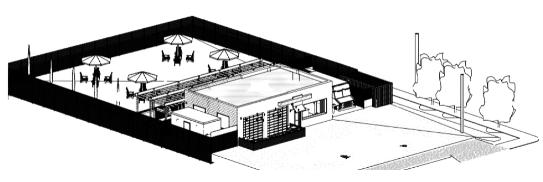
Husband and wife Layton Judd and Louise Fahys said they’re building the type of place where they want to take their dog Barkley.

“There’s really no place to go to hang out with your dog and friends and chill out,” Judd said.
The result is Happy Dog Park & Taproom, an astro turf dog park with a self-serve tap wall and food truck service that the couple are working to open at 2850 W. 26th Ave.

The business will operate on a membership model, with options for $35 a month or $240 a year. A single visit will be $15. And that’s per dog — humans don’t need a membership and just pay for anything purchased.
“The customer is not somebody who comes to buy beer, the customer is the dog,” Judd said. “It’s a private club for the dog.”
Judd said the park will be 5,000 square feet and have deodorizing and cleaning agents to eliminate odors. There will also be a 1,400-square-foot tap room and a 200-square-foot deck.
“The amenities for a dog should be the same as what you would want,” Judd said. “To owners, pets are like their babies, so we’re going to do our best to keep a clean facility.”

The couple signed a lease at the Jefferson Park location because they say data shows roughly 40 percent of the surrounding residents have dogs. The property was previously used by Enterprise, the car rental agency.
Fahys founded Code A Site, a company that builds and maintains websites for clients, and Judd founded 3 Birds Marketing, which focuses on the automotive industry. They said they’ll probably keep working in the tech industry after opening. “We’re entrepreneurs, so this is to us just like a tech business,” Judd said.
At Happy Dog, pet parents will need to download the app Plan2Play, which was created by Fahys, to register their dog, upload vet records and manage membership.
Fahys said this business is not just about dogs. With the app, members can connect directly and meet up outside of the taproom.
“The main passion we have is community,” Fahys said. “That’s why I made the app – it could be a really great place to meet people, and dogs are great conversation starters.”
The southeastern end of the Highland neighborhood, often referred to as Lower Highland or LoHi, may have some new parking rules.
The Denver Department of Transportation and Infrastructure (DOTI) has been working on a draft plan that calls for some significant changes to parking rules in Lower Highland, including paid parking and two- and three-hour time limits for parking.
The first major change in the draft is that the streets in Lower Highland would switch to paid parking with a two-hour limit. This includes streets south of but not including West 32nd Avenue, east of but not including Umatilla Street and west of I-25. Payment would be made via pay stations or an app.
There is also a three-hour parking time limit proposed in the drafts on many streets within two to three blocks just outside the proposed paid two-hour parking zone.
These include most of the named streets south of 35th Avenue running from Lipan Street to Wyandot Street, as well as some portions of numbered avenues between 28th Avenue and 33rd Avenue between Zuni Street and Lipan Street.

Also proposed in the draft is a three-hour parking limit on both Tejon Street and Navajo Street north of West 35th Avenue and south of West 38th Avenue along the commercial sections of the corridors.
Residents of the neighborhood who live in buildings with 50 units or less would get a neighborhood parking pass and be exempt from the time limit as well as having to pay for parking. They would also receive a pass for guests.
This is a major change from prior DOTI policy to be more inclusive of residents living in multifamily condos and apartments because, according to DOTI spokesperson Vanessa Lacayo, in the past DOTI only allowed neighborhood parking passes for buildings with nine units or less.
Applicable hours for the two-hour paid parking zones and the three-hour parking zones would be from 10 a.m.-10 p.m. and exclude Sundays and holidays. Parking rules would not change for the remainder of the Highland neighborhood.
Lacayo said that DOTI will also introduce “additional accessible parking spaces on Central and Boulder Streets to provide convenient and comfortable on-street vehicle access for persons with disabilities” as well as installing “bicycle/scooter corrals at strategic locations to accommodate bicycle and scooter parking demand.”
Lacayo noted that community input has been sought throughout the process, and that impacted residents received a letter about the draft parking changes in March, soliciting public comment and input through April. A virtual community meeting was held at the end of April.
The registered neighborhood organization Highland United Neighbors Incorporated, the City Council District 1 office and other affected residents and businesses were included in the stakeholder committee. The soonest that these changes would be implemented is this winter.
Research from UCLA urban planning professor Donald Shoup stated that converting free parking to paid parking can often help local businesses, by ensuring that parking spots are being turned over to provide availability for customers to park.

The business is currently in the permitting process with the city.
If everything goes well, Judd said, the pair plan on opening in the fall. They expect to invest upwards of $500,000 in the buildout. Happy Dog & Taproom will be open most the day, Fahys said, serving coffee in the morning. Judd and Fahys aren’t the first to explore pet-friendly businesses locally.
Justin Henry opened the Watering Bowl in 2013, offering a place for pets to play and owners to drink without a membership model. Judd said it closed in January. “They set the groundwork potentially for our business to go through,” Judd said. “We owe a thank you to them.”


Do you remember where you were on Jan. 9? I was at the Capitol … but I can explain myself!
My name is Alex Valdez, and I am honored to serve as state representative to House District 5. Though I often get confused emails meant for District 5's congressman, I have a way better job being the local voice for this district.
I was apprehensive about opening with a cheap two-years too-late joke as national headlines make me grimace too. But don't worry, this is solely com munity news, thanks to The Denver North Star. After perusing through their arts and culture opportunities, I stopped by the editor's note, which recognized readers asking to hear more about the work in the Capitol.
We began Jan. 9, and as I walked up the snow-covered steps of the Capitol, I was well-rested and excited to start another impactful session. In about 120 days, both the Senate and the House work to pass hundreds of bills! A shockingly short delivery time, but time is of the essence with Coloradans' rights and lives at stake.
About halfway through the session, on March 1, Luis Garcia, age 16, was taken off life support after suffering fatal gunshot wounds close to campus. East High School mourned a beloved peer and a great soccer player.
On March 2, the Capitol was confronted by the roar of students unwilling to let the death of a classmate remain another ignored tragedy.
The process of passing this year's gun safety bills has not been quiet. While unveiling proposed legislation, a fire alarm rang in ears and forced all to evacuate. There have been countless hours of talk and filibustering on this topic. My email was flooded with Coloradans in opposition and support. Conversations from news outlets and social media about March's events were heavy. But the chatter was deafened by the voices of students and teachers missing school on account of recurring gun violence.
Gun violence is not a new issue. That is why I'm proud of this session's gun safety measures. SB23-168: Gun Violence Victims' Access to Judicial System, SB23-169: Increasing Minimum Age to Purchase Firearms, and SB23-170: Extreme Risk Protection Order Petitions. Here in the House, we know that gun re-
form is not the only issue compromising Coloradans' lives, and we have been pushing for critical environmental, health care and housing reform. For a bill to be enacted, it must be carried through the House and the Senate. However, community members' involvement, aka "stakeholders," is essential to ensuring the bill truly serves us all.
I have had diverse stakeholding, from those struggling to afford extenuating rental fees, the switch to eco-friendly housing and energy opportunities, and groups representing underserved communities limited in their ability to advocate.
HB23-1068 is on the desk of Gov. Jared Polis, and I am excited to deliver direct savings for renters by limiting expensive pet rent and pet fees. After a few changes, I am glad to have the opportunity to clarify some concerns I have received before this bill passes.
This bill limits pet rent to a maximum of 1.5% of your monthly fee, so $1,500 a month equals about $22 a month! The pet deposit is limited to a refundable $300, the lower range of average deposits.
Seventy percent of charging happens at home, and it is crucial to create housing that will meet our sustainable future needs. My office has worked to address this with HB231233, which will require EV charging stations in multifamily housing.
I have also been working to deliver a couple of bipartisan bills, such as HB23-1260, which will draw down about $5.5 billion and revitalize well-paying manufacturing jobs, advanced industry and STEM education in Colorado.
Communities need a voice in change happening and an actionable part. A few of my bills will offer this choice by continuing the funds for community-led public safety programs, community solar garden energy participation, and the option for nonplastic alternatives in retail stores.
I hope this update gave you a better idea of movement here in the Legislature. If you have time, The general assembly website is a great way to learn about participating in the legislative process, watching sessions and committees, and of course, information about my bills.
Alex Valdez was first elected to north Denver’s state House District 5 in 2019.
By The Denver North Star Staff
Over the next three years, Denver is planting over 2,100 trees on residential properties in neighborhoods where there are lower volumes of trees and are considered heat-vulnerable.
These neighborhoods have significantly less tree cover and shade than other neighborhoods. Being unable to cool yourself down on a hot day is not only uncomfortable, but it can also be deadly.
The neighborhoods most eligible for trees include Globeville, Elyria and Swansea, as well as Sunnyside, West Colfax and Chaffee Park, among others throughout the city.
The majority of tree planting space in Denver is on private property, making it an opportunity to add shade.
Denver’s Office of Climate Action, Sustainability and Resiliency awarded nearly $1 million dollars to plant trees, develop close community relationships and care for new trees by working with The Park People, Americas for Conservation and the Arts and CREA Results. More information can be found by calling Heather Thompson at 734-904-1559 or heather@crearesults.org and at theparkpeople.org.
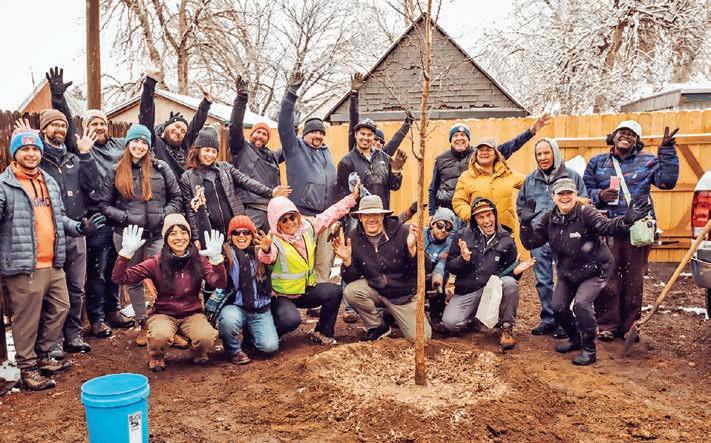
Denver city officials recently announced they will make changes to how they oversee and track responses to unauthorized encampments following the results of a city audit.
The audit report and its recommendations released today center on a need to refine and clarify policies, procedures and data-tracking related to Denver’s encampment response efforts to ensure the city remains compliant with legal requirements and treats people experiencing homelessness equitably.
“Chronic unsheltered homelessness is the most complex issue any city will manage, and we appreciate the audit team, over the course of many months, taking a hard look at how our city is approaching the challenge of encampments,” Mayor Michael B. Hancock said. “More than a housing crisis, it’s a situation made more complicated amid a nationwide drug crisis, mental health crisis and continued fallout from the pandemic on our most vulnerable residents and communities.”
The city’s encampment response connects people experiencing homelessness to resources while addressing areas that are deteriorating with increasing amounts of trash, public health and safety hazards and items encumbering and blocking access to the public right of way.

The city stated it is important work that helps to improve public health and safety conditions, including ensuring that access to public sidewalks, pathways and roadways remains clear and safe.
Denver has already implemented many of the recommendations in the audit report. The creation of the Unauthorized Encampment Response Program in the summer of 2022 was intended to centralize and standardize the city’s response to encampments.
Before that, many city agencies had been
working in coordination informally to keep people living outdoors safe and healthy while also keeping our public spaces clean and connecting people with services.
The audit reviewed three and a half years prior to the implementation of the formal Encampment Response Program. The goal of the citywide program is to manage the city’s policies, procedures and data related to encampment response efforts, which inherently addresses many of the audit’s findings.
In addition to agreeing to implementing the audit recommendations, focused largely on establishing and documenting policies and procedures and gathering more data to report out comprehensively on its encampment response, the city has:
• Budgeted around $250 million for programs and capital projects this year to reduce homelessness and increase housing. This is a far more significant investment than the cost of encampment cleanups, estimated by the audit report at $4 million a year, with outreach the most significant portion of expenses at 60%.
• Housed nearly 15,000 unhoused residents and invested in 9,000 affordable housing units over the past 12 years.
• Innovated new programs such as Social Impact Bonds to create supportive housing with services for those experiencing homelessness.
• Expanded shelter operations so many facilities now function 24/7 all year long.
• Deployed new solutions like tiny home villages and safe outdoor spaces.
• Prepared to implement in the coming months best practices learned from other cities like LA, Houston and Seattle to use an “encampment resolution” approach that connects entire camps to housing opportunities, directly from the street.
Denver Public Schools' Superintendent
Alex Marrero has announced the first draft of the Long-Term Operational Safety Plan. This first version of the plan was developed after the DPS Board of Education directed the superintendent to create a new plan by June 30.
In the creation of this first draft, DPS stated Marrero received input from local, state and national experts in safety in general and school safety, as well as multiple DPS community partners and family groups. He also gathered input on what to include in the plan from thousands of families, students and staff.
“I think that it is very important for everyone to know that this is not the final version. This first version is far from a finished product,” Marrero said. “We have listened to our safety experts and received some community input. Now, we want to hear from our students, our families, our staff, and our community. There will be many ways for you to share your
input with us that will be announced in the coming days.”
After receiving community feedback about this first draft, Dr. Marrero will release a second draft by June 1. Then, a second round of community feedback will begin. The superintendent will unveil the finished product on June 26 as instructed by the Board of Education.
DPS suspended a rule that removed armed officers from campus after a shooting in March at East High School.
Within the draft document, Marrero recommended the Board of Education allow all district-run high schools and sixth-through12th-grade campuses to “engage their school communities to make a site-based decision regarding (school resource officers) on their campuses.”
More information in addition to the full report are available at superintendent.dpsk12. org/safetyplan/.
“More than a housing crisis, it’s a situation made more complicated amid a nationwide drug crisis, mental health crisis and continued fallout from the pandemic on our most vulnerable residents and communities.”
– Mayor Michael B. Hancock








alking through the park with my husband recently, he said, “Remember bringing the boys out everyday to crawl around on those picnic tables?”
I sighed and smiled and remembered. We are often stopped in our tracks by a sweet memory of some lovely moment with our boys when they were smaller, full of joy at having found some new way to move their bodies or at discovering something new about their world.
But it wasn’t toddlerhood we were wistfully remembering through rose-colored glasses; it was lockdown. As I have said here before, I would not wish COVID on anyone. Not the infection on any individual and not the pandemic on any civilization.




The repercussions on the individual health of so many of us alone, not to mention the effects of missed developmental social milestones on a generation of kids. But here's the thing. For those of us who lived and are trying to move forward, it may be worthwhile to look back every so often just to make sure we don’t forget some of the ways we learned to survive that might still serve us here three years later.
When I first wrote this list in March of 2020, fighting COVID was being likened to war. For many, the combination of hiding from an invisible enemy and not knowing exactly what we are supposed to do spurred helplessness.
We froze, a normal response to an untenable situation, but not sustainable. I needed something that I could do. So I made a list of simple things, shared it here with you, dragged my family along and focused my energy on at least one of them each day for
Wat least a few moments.
DRINK A CUP OF WATER
Even mild dehydration can impair brain function. We need roughly 72 ounces a day. More if it's dry out or you’re under stress. How to know you are getting enough? Look in the toilet. Anything darker than a yellow tinge and you need water.
STAND ON ONE FOOT WHILE YOU BRUSH YOUR TEETH
Because it’s new! And it’s hard. Practicing a new skill stimulates neurons in the brain, which forms more neural pathways and allows electrical impulses to travel faster. This helps you adapt faster to changing circumstances, and that can help you live better, longer.
MOVE


Life can make us want to just curl up. So start small. Stand up every hour. Take a lap around your house, climb some stairs, spin in a circle. Have a dance party with your cat! Once you get moving, your body will ask for more.

LEARN HOW TO SAY "THANK YOU" IN A NEW LANGUAGE

Bonus points if you use an actual dictionary. Not only are you learning, you are reinforcing the gratitude. This small dose of thankfulness can spark joy which improves respiratory function, circulation and digestion. And if you stop searching for that dictionary you saved from college and just Google, it only takes a minute.
CONNECT WITH SOMEONE OUTSIDE YOUR FOUR WALLS
Text, call, send a carrier pigeon. Now that we can — walk next door! Creating connec-


tion is one of the most simple health strategies available to us. Just a quick conversation with your neighbor about what you did today can do the trick.
Humans are excellent at discovering weaknesses. But self-esteem boosts creativity and gives you a more positive outlook. My list includes stirring peanut butter back together after it’s separated. It doesn't have to be rocket science. Just give yourself a little credit.
Deep breathing sends calming to our brains. It can lower your heart rate, decrease your blood pressure, reduce muscle tension and help you feel less stressed overall. Try it now! Close your eyes, notice that you are breathing. See if you can breathe through your nose or send your breath more widely into your torso. Get curious for just a moment about how that feels. That’s it. You meditated!
If you are struggling with the effects of the pandemic, please know you are not alone. This list of things isn’t meant to take the place of getting professional help. Reach out to a trusted health professional and if you can't find one, please let me, or someone, know.
There is help out there. And even if you are feeling like your life is pretty much back to normal, maybe there are things (like dragging your teenage kids to the park to jump up and down) that might serve you in your post-pandemic life that you’d like back.
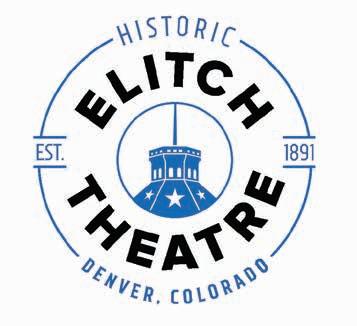
Start small and remember that the most
See 7 THINGS, Page 11
health stratconversawhat you did
YOU’RE discovering boosts creativoutlook.

butter back doesn't have yourself a SECONDS, calming to our decrease muscle tension overall. Try that you are through more widefor just a That’s it.
effects of are not meant to take help. Reach professional and if or someif you are much back to (like dragpark to jump you in your back. the most
ZONE:


hen I was a teen, my parents unexpectedly divorced. In my eyes, one day they were happy; the next they hated each other. Their split changed my life forever.
Walent of one big event. When trauma happens this way, it might be harder to diagnose, but is no less damaging.
JILL CARSTENS
Relaxed divorce laws during that time resulted in the first wave of historic numbers of couples splitting during the late 1970’s and early 80’s. The prevailing philosophy concerning the effects of divorce on children then was that they “are resilient,” and that my brother and I would be “fine.”

Therefore, during the chaos that ensued in our household, my brother and I were not really included in the divorce arrangements yet were expected to be ok with our lives being turned upside down.
I might not call divorce a trauma, but my brother and I really were not okay for a long time. Yes, children might be capable of resiliency, but should we take that for granted and just assume they are okay after a difficult event?
I recently read Brad Wetzler’s book “Into the Soul of the World.” I know Brad from a writing class where he had mentioned experiencing a childhood trauma. I did not know what that trauma had been until I read his book, in which he describes a trip with his father where he literally almost drowned.
The near-drowning would seem to be enough to qualify as a trauma, but his father’s blunt dismissal of the accident is what has plagued his adult life. His father asserted that Wetzler overreacted to what happened, essentially gas-lighting him and then labeling him as “unmasculine” the rest of his life.
Although I did not almost drown, my mother held on to the “resiliency” assertion and pretty much continued her life as if nothing major had changed. If I expressed sadness or frustration with our new life, I felt unacknowledged and it was suggested that I was overreacting. My mother, with whom I had developed my first “trusts,” was inadvertently dismissing my feelings. This caused me to distrust my own feelings.
According to the National Child Traumatic Stress Network (NCTSN), “The importance of a child’s close relationship with a caregiver cannot be overestimated. Through our attachment relationships, children learn to trust others, regulate their emotions and interact with the world; they develop a sense of the world as safe or unsafe, and come to understand their own value as individuals. When those relationships are unstable or unpredictable, a child often resorts to feeling helpless and that he or she is bad and the world is a terrible place.”
After years of experiencing his father’s negative talk, Wetzler grew to feel hatred toward himself. That he was “bad,” unworthy. His father, an adult in a position of trust, chose a hurtful way to deal with Wetzler’s trauma.
Unlike obvious traumas like physical abuse, it is often the more subtle traumas that are hardest to detect. The result of years of brief transgressions can add up to the equiv-
Continued from Page 10

trying times of our life won’t last, but the things we learn from them can. Not because adversity necessarily makes us stronger. That’s a fantasy reserved for superhero movies, but because adversity can remind us that sometimes the best answers are the most simple.
Caring for ourselves, connecting, remembering that the little things are sometimes
Complex trauma, according to the NCTSN, is a series of events that are personally and emotionally invasive. If they happen within the family dynamic the effects can become part of a child’s impression of normal and follow them into adulthood.
For Wetzler, after looking back over his childhood through the eyes of a good therapist, his father’s imposing of what might be described as tough love took place through years of snide and demeaning comments that were cloaked in the label of “joking.”



Even something as offhand as a condescending facial expression, when it becomes the norm of response, transforms into an abusive tool. When it is a parent wielding this tool, it can cause lifelong scars.
Children experiencing dysfunctional family situations often find any way they can to adapt. The NCTSN suggests these kinds of learned adaptations make sense when physical or emotional threats are active, but as a child grows up and encounters safe relationships, those adaptations no longer help and can actually hinder the development of healthy relationships.
I was at a high school reunion a few years back and an old classmate was telling a group how he “doesn’t connect” with his son who had eschewed sports for thespian activities. The look on this classmate’s face was so ridden with judgment, rejection and dismay, I shudder to think if he revealed such displeasure about his son in front of his son, simply because he was choosing different interests than his jock-dad.

I am bringing this all up because, even if children are deemed “resilient,” or even seem to be navigating a difficult situation well, we must be careful. Childhood is a critical time when our brain and emotional systems are developing. If they develop with trauma or dysfunction, that child will most likely take on coping mechanisms that will eventually impede his success as an adult.
I am certainly not implying that we are all being bad parents. I know my mother did the best she could during that time period when divorce was still new. But we know more now. I do not advocate walking on coals around your children or responding to every accomplishment like they won the Nobel Prize either. But let’s consider our responses and proceed with the awareness of their power. Ask questions and defer judgment.
The lesson here is: Don’t blow off your child’s feelings. If they were unfortunate to witness to a traumatic situation or are repetitively bullied at school, become their advocate and get them some help now so that they can learn to lead healthy and productive adult lives. Let’s not always assume resiliency. Sometimes strength is in having the humility to seek support.
Jill Carstens taught for 30 years and now enjoys writing for this publication! You can view more of her writing on Instagram @lettersfrommissjill. Email her with comments or story ideas at jill@denvernorthstar.com.
all we can do, and that’s enough.
Erika Taylor is a community wellness instigator at Taylored Fitness, the original online wellness mentoring system. Taylored Fitness believes that everyone can discover small changes in order to make themselves and their communities more vibrant, and that it is only possible to do our best work in the world if we make a daily commitment to our health. Visit facebook. com/erika.taylor.303 or email erika@ tayloredfitness.com.
hat is she now, the Grim Reaper?” said my neighbor to his husband.
WThe week before my son lost his coworkers, I was planning this installment of The Gray Zone and had invited a few people to join me at Convivio Cafe to play a game designed to get conversations started about death.
“Mmm. Let’s just say the Grim Reminder,” came the reply.




KATHRYN WHITE
My last column focused on two ways we can undertake conversations about death and dying — death cafes and end-of-life coaching.

Writing about death got people talking. Neighbors and friends approached me with stories about their own orientation to the topic. It seemed people were relieved to speak openly about something so tender and important.
This week, conversations about death took an unexpected turn for my family. Two of my son’s coworkers at a neighborhood restaurant were killed at work before the restaurant opened. We’re in shock. We’re sad, deeply sad. We find ourselves casting about for answers, but none have come.
Our family has experienced loss. But in absorbing the news about my son’s coworkers, I’m reminded that each loss carries its own distinctive weight. It is singular, unmatched. I acknowledge — as I write about death — that loss, grief, facing a serious diagnosis and grappling with a horrific tragedy are not made simpler or less painful by having become more comfortable talking about dying.
The Death Deck is a 112-card game that can be played at parties, with pairs of friends or in couples. Cards are color coded into two types of questions.
Yellow are open-ended, deeper questions like, “Share a profound religious or spiritual experience you’ve had. How did it change you or your beliefs about life and death?”
Purple cards carry lighter, multiple-choice

The Death Deck, created in 2018, gets people talking about a topic “we’re all obsessed with but often afraid to discuss.”
questions, some tongue-in-cheek, like: Open caskets:
A. Help me get some closure with a final,
It is finally May when we see spring flowers, warmer weather and when high school seniors can see the light at the end of the tunnel. And no, it is not a train … it is graduation!
Even after four years in the big building at West Speer Boulevard and Decatur Street, many students may not know the history of the venerable structure. This month’s column will rectify that problem.
From its founding, Denver worked to provide free education for its youth. Districts 1 and 2 in Denver and Auraria spent years struggling to fund schools, with too little money and help. In 1872, school officials created District 17 in North Denver, which covered the whole northwest side.





Because of tight money, the first school to go up was a tiny, one-story frame building on
the southeast corner of West 15th and Central Street. A rising number of children in the area soon swamped the tiny schoolhouse.
In 1873 the school board issued bonds to build a new and much bigger school. When the bonds proved insufficient to get the project off the ground, the corporate founders of the Highland Park subdivision gave a lot on West 29th for a beautiful stone school building.
The one condition was that the land would always be used for a school. Ashland School stood on the grounds of the current North High. In the meantime, the board also built Bryant, Boulevard and Grand View schools to serve other sections of the district.
In 1886 the administration began tearing down the Ashland school, and in 1888 opened the North Denver High School on the site of the current Valdez Elementary School.

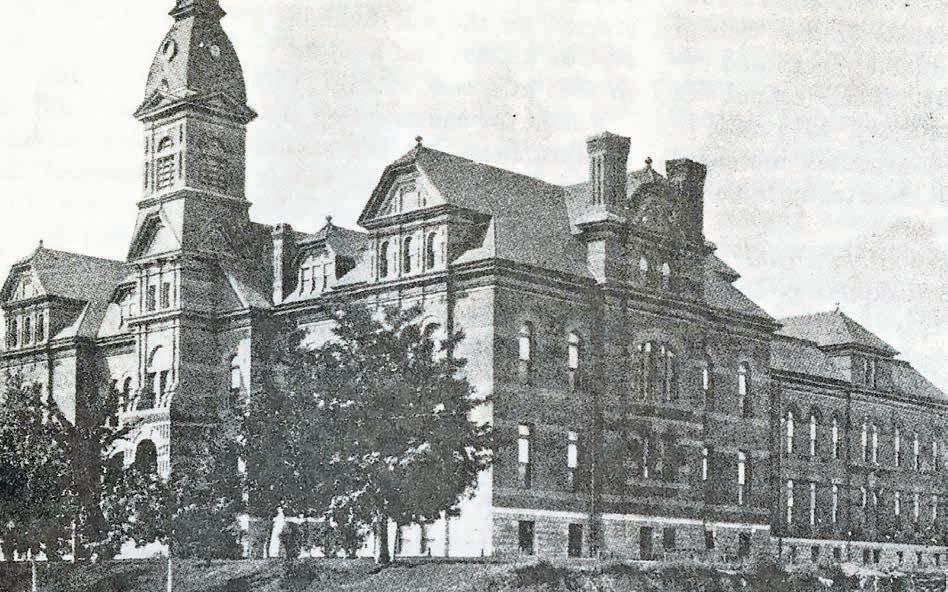
For the first decade the students all took elective classes, generally either preparing them for college and professional work or for work in the trades. Initially they finished in three years, but soon the time needed to graduate rose to four years.



Then in 1895, the school board created a program that combined classwork and life experience to permit some students to graduate sooner than four years. This allowed most students at that time to finish in three and a half years. The first graduating class, in 1886, was six female students. Graduates rose to 48 in 1899.

As the Northside population grew, the district added more elementary schools and expanded the high school. One cause of growth was the expansion of the streetcar system that made getting around much easier. The system had a stop outside of the West 32nd Avenue side of the building, and another streetcar ran on Federal Boulevard.
The “old” Beaux Arts central section of the modern North opened in 1911 with a 1913 addition to the west housing home economics and shop classes. The district removed the
word Denver, creating the current name of North High School. Further building additions came in 1957 (the east physical education wing), 1980-83 (the auditorium, cafeteria, atrium, classrooms and offices), and a major remodeling in 2010-11 of the 1911 structure.


North has had quite a few famous alumni. Big-band musician Paul Whiteman attended North as did Golda Meir, who was the first woman prime minister of Israel. Burnham Hoyt, who designed the Red Rocks Amphitheater, graduated in 1904. Numerous artists, musicians and businesspeople also called North their academic home.


For those who want to learn more about North High School, there is an excellent history room in the school, maintained by the alumni association. More information on the school’s history can be found at links to websites in this article at denvernorthstar.com.
So, to the class of 2023, good luck in wherever life takes you. And never forget your academic mother, North High School. Go Vikings!
Con
meaningful goodbye
B. Are fine if it’s what the family wants
C. Kinda creep me out. I want to remember the person in their living state
Most of that day’s five players didn’t know each other, so I divided the cards into the two types and offered them a chance to choose. They could pass on any question.
Adam started with a yellow card, the open-ended type.
Nickie, Jan, Linda and I were immediately drawn in by Adam’s recounting of a profound spiritual experience. The next few people picked purple, multiplechoice cards.
Before long, Nickie was encouraging everyone to answer each card. She was curious; we were all curious. By the time we wrapped up an hour later, we were pulling mostly yellow cards.
“It was the fastest way I have experienced to feel like you know people you’ve never met before,” said Linda. “It felt very intimate because some people shared their feelings about people they love passing. It was heartfelt. It felt like a safe space to talk about loss.”
For Jan, “I don’t necessarily enjoy the usual chitchat, like what do you do for your occupation, etc. The game gave us a chance to know something about one another in a very unusual way.
And it was fun to get everyone’s take on some of the questions. It really is a great way for you to start thinking about how you want your death handled, in not a terribly sad way.”
“So fun,” Adam said. “Very surreal to talk about death with a bunch of strangers, but also a delight to talk about it in a way that doesn’t break my spirit. Also, as someone who is too obsessed with game rules, it was nice to let go and just let the game move the conversation in interesting places.”
I met with the game’s creators, Lori LoCicero and Lisa Pahl, a licensed clinical social worker, later in the week on Zoom. The two met while Lori’s husband was receiving home hospice care for pancreatic cancer.
LoCicero and Pahl weren’t surprised by how quickly a group of strangers in north Denver connected over the game.
“When Lori and I designed the game,” Pahl said, “we were mostly thinking about helping people be prepared. But the other thing that’s quite lovely about the game is how connected you feel with other people you’re playing with.”



“We wanted to put something out there that could start these conversations,” said LoCicero. “It could be the icebreaker. We talk about sports and the weather and what’s going on in our lives, but without that extra little nudge. These cards are that nudge that allows people to start opening up.”
In talking about The Death Deck with LoCicero and Pahl, as in the game at Convivio, conversation led to sharing about people we’ve lost. And miss. Sharing stories and memories became a living tribute.
When my son and I attend the memorial service for his coworkers, a living tribute will have already begun. Answers may take time, but honoring them doesn’t need to wait.
North Denver misses you, Emerall and Nacho.
Next month, I’ll wrap up the focus on death and dying with information about laws that have been passed in recent years and a few earth-friendly options for what we can do with our bodies once we’ve left them. Until then, check out @thedeathdeck on Instagram, author and humorist @GailRubin on YouTube, and food-for-thought coming from @talkdeathdaily, @thegooddeath, and @deathwives.
Kathryn has lived in north Denver since around the time the Mount Carmel High School building was razed and its lot at 3600 Zuni became Anna Marie Sandoval Elementary. She’s raised two children in the neighborhood, worked at several nonprofits and volunteered with the Alzheimer’s Association Colorado Chapter.
Vera Wong wakes daily at 4:30 a.m., takes a power walk that is exactly 3,112 steps and strides purposefully into her day.
Each task is met with military precision, and she helpfully advises anyone who will (or won’t) listen on how to live a life of vigor. Especially her son, Tilly, who she thinks should be scanning his office for a girlfriend and waking before the late hour of 4:31 a.m. Vera may be 60 years old, but her text messages are hip and trendy with slang she looks up on the Google, and her advice is always free and abundant.
Vera, of the eponymous “Vera Wong’s Unsolicited Advice for Murderers” by Jesse Q. Sutanto (2023), is a steamroller of a woman who believes there is only one right way to do things and that is Vera’s way. She owns Vera Wang’s World Famous Tea Shop (Wang is not a typo, but a stroke of marketing genius) and specializes in rare and delicate Chinese teas. Unfortunately, her customer base consists of exactly one customer.

When she enters the shop below her apartment one morning, her life suddenly changes for the better because there is a dead man on the floor of her tea shop. The police don’t believe it’s a murder and don’t bring along a crime scene investigation team like on TV.
It’s up to Vera to take care of the details, like outlining the body in Sharpie and taking the
flash drive from the dead man’s hands. She now has a mission – to find the killer – and everyone is a suspect. What she doesn’t expect to find as she works to solve the case are people who need her as much as she needs them. At turns hilarious and heartwarming, this is a story of friendship, loss and found family. The mystery drives the plot, but the people are the real story. Populated by a cast of suspects and secondary characters who are as unique and vibrant as Vera, this sweet read is perfect for Asian-American, Native Hawaiian/Pacific Islander Month being celebrated during the month of May at all Denver Public Library locations. Come by and check it out!
Wendy Thomas is a librarian at the Smiley Branch Library. When not reading or recommending books, you can find her hiking with her dogs.

COMING SOON!
The Denver Public Library's Summer of Adventure program encourages youth from birth to 12th grade to read, make and explore. We provide youth with opportunities for informal learning and activities to help them retain academic and social skills throughout their summer vacation. Plus, it’s free. Visit summerofadventure.org for more information. Register online or at a Denver Public Library branch near you starting June 2!
The Denver North Star is hand-delivered to 34,000 HOUSEHOLDS AND BUSINESSES that are full of people who hang out at all the hippest places where The Denver North Star is delivered.
Don't miss your chance to advertise in next month's edition. Ads@DenverNorthStar.com

Ben Martin SVP, Commercial Loan Officer 303 481 1358 (direct) ben.martin@collegiatepeaksbank.com NMLS# 1062263
Oficial de Préstamos Comerciales
Ben Martin SVP, Commercial Loan Officer 303 481 1358 (direct) ben.martin@collegiatepeaksbank.com
Ben Martin SVP, Commercial Loan Officer 303 481 1358 (direct) ben.martin@collegiatepeaksbank.com





NMLS# 1062263
NMLS# 1062263
Kellen
Kellen
is still in its “study” phase.
“The project is in a preliminary design (phase),” Fowler said. “We’re analyzing existing conditions. It’s like studying the highway.”
The project is using details from existing conditions and proposed alternatives from the I-25 Central Planning and Environmental Linkages (PEL) study to develop an effective solution that not only remedies current problems, but will align with the future vision for the interstate corridor and the surrounding area and community.
“We’ve been promised this since at least 2019 that this was going to start getting engaged, and it’s disheartening to hear that after all this time they’re still stalling and reviewing costs,” Guiietz said. “We’ve been told on multiple occasions that they were going to come to the various neighborhoods in northwest Denver and start the process of letting people know what they were going to attempt to do and give us timelines.”
This is the first project coming from the PEL study that was conducted between the fall of 2017 and winter of 2019. The study identified congestion issues on I-25 between Santa Fe Drive and 20th Street, and sought where safety improvements could be made. CDOT is also addressing environmental concerns within the corridor throughout the study.
According to a CDOT report from April 2020 on the PEL study, at least three bridges have deficient clearance, with vertical clearance as low as 12 feet 5 inches. This has resulted in frequent bridge strikes from vehicles that are too tall driving on I-25’s north and southbound lanes.
Adding more bicycle and pedestrian im-





lthough people voiced concerns about the treatment of unhoused residents who may be living in their cars, the City Council recently approved an update to Denver’s parking ordinance regarding large vehicles, with the intent of reducing the number of what are known as “junkers.”
Atake care of as many human beings as we can along the way,” he said.
provements was another necessary outcome included in the project. Of the multiple I-25 crossings, two are pedestrian-only that include 16th Street and Speer Boulevard. All other crossings within the corridor include a mix of multi-use paths, signed routes and shared lanes.

For pedestrians crossing over the 23rd Avenue bridge, they must navigate a section without sidewalk, and bicyclists must go through narrow lanes without buffers on their sides. Building additional crossings for cyclists and pedestrians, and improving these crossings throughout eastwest connections over I-25, are also necessary outcomes within the project’s scope.
“CDOT has a specialty team that prioritizes bridges across the state. Safety is generally the top concern with any project,” Fowler said. “We do bridge maintenance constantly.”
To bring these two bridges up to standards, CDOT estimated the project to cost between $65 and $80 million, according to the initial 2020 report. However, that number could change after CDOT is finished analyzing alternatives.
“We don't know the full scope of the project,” Fowler added. “The sole outcome of the project is to replace the bridges.”
As a free community newspaper, The Denver North Star is funded through advertising, the occasional grant, and contributions from community members like you.
As a community-minded newspaper, we keep our ad rates the lowest in the city to support our local businesses. Contributions and grants make up 10% of our annual income and every penny goes to support publishing costs.
Your contribution ensures this paper can continue serving NW Denver. Thank you. Please take this opportunity to renew or become a member.
Please visit DenverNorthStar.com or mail this form along with a check to: Denver North Star P.O. Box 11584 Denver, CO 80211
We appreciate your contribution of any amount. If you contribute $50 or more annually, and would like an additional copy of the paper mailed to you in an envelope each month, or live outside our free distribution area and would like a mailed copy, please check the option below.
Please mail me a copy of the newspaper each month:
___ Yes ___ No
Name:
Address:
Phone:
Email:
The changes to the city’s parking ordinance include the amount of time that large vehicles can park in commercial and industrial areas on city streets and updated the rules to make it harder for junker vehicles and trailers to remain on city streets for longer than 24 hours.
The council also approved ways to make it easier for the city to tow and remove junker vehicles and trailers, and it increased the distance that large vehicles are supposed to move to still be legally parked from 100 feet to 700 feet. Owners also have to significantly move the vehicle, not just parking it around the block, for example.
Residents can now park in the same spot in front of their home as long as they move their car every 72 hours, something that used to be illegal. Under the new ordinance, a vehicle parked for 72 hours in one location would need to move a full block away after that time period to be compliant.
A last-minute amendment was made by District 6 Councilman Paul Kashmann to the bill to attempt to address concerns by homeless advocates and the American Civil Liberties Union (ACLU) to give a 48-hour notice prior to removal of a junker if the vehicle is being used by an unhoused person as a residence. The amendment also added more reporting requirements for when vehicles are towed.
The measure passed 11 to 1, with District 9 Councilwoman Candi CdeBaca voting no, and Councilwoman Robin Kniech not present.
“I don't expect anybody living on the street or in a vehicle or in a tent to be thrilled with this bill,” Kashmann said, adding it was commercial semi-trucks blocking alleyways in his district that first brought the issue to his attention years ago.

Through addressing those problems, Kashmann said difficulties with other vehicles became apparent.
“Until we have everybody off the streets and in dignified housing, we’re going to continue to have these discussions that we have to manage our city, and … we’ll do our best to
///
When the ordinance was introduced at the City Council Land Use and Transportation and Infrastructure Committee in April, Cindy Patton, senior director of operations for the Denver Department of Transportation and Infrastructure (DOTI), said residents had complained that drivers in commercial areas were “playing a game” with the parking rules, only moving their vehicle and trailers a little bit to stay legally parked while hogging on-street parking.
Patton also said complaints came in about large trucks, junkers and inoperable vehicles parked for extended periods of time on city streets, often blocking the sidewalk.
The new law will limit large vehicles to only be parked on city streets for two hours in residential, commercial and industrial areas. An exception for the rule is when a large vehicle is being used for services in that neighborhood or when the driver is staying nearby overnight.
The new policy expands the 24-hour parking limit on city streets to vehicles with attached campers and RVs larger than 22 feet as well as trailers attached to licensed vehicles to all zones of the city, not just residential areas.

The definition of a junker vehicle now includes pull-behind trailers. A vehicle identified as a junker is now limited to 24 hours of parking on the street in all parts of the city. Once a vehicle is identified as a junker, it must be removed from public streets or incur fines.
CdeBaca said there could be “potential discriminatory unintended consequences” of the bill, and that unhoused residents don’t have a safe place to go with their vehicles. The city is currently looking at expanding what are known as “safe parking spaces” that allow people to stay in their vehicle for a certain number of days.
The ACLU of Colorado stated in a letter prior to the recent council meeting that the bill had not received enough community input and may be harmful to residents, especially unhoused residents.


The ACLU stated the provisions of the bill were overly broad and could be used as discriminatory surveillance to police marginalized communities. In the council meeting, at least a dozen people were present wearing buttons that said “No to poverty tows.”
Before voting yes on the bill, District 1 Councilwoman Amanda P. Sandoval said she intends to work on updating Denver’s ordinances so residents on low incomes can pay reduced fines and penalties.
By The Denver North Star Staff
Starting in June, the First Friday History Tours will return to the Historic Elitch Theatre. Denver's oldest cultural venue offers visitors the opportunity to explore the rich history of this iconic 133-yearold building.
Built in 1891, the Historic Elitch Theatre is the oldest summer stock theater in the country, and Denver's oldest cultural venue. The theatre predates the Denver Zoo, the Botanic Gardens, the Natural History Museum and the auditorium theatre, now named after Ellie Caulkins.

The History Tours will take visitors on a journey through time, exploring the stories of early Denver settlers and events that have shaped the theater and the people who have been a part of its history.
Tour guides provide insights into the theater's past, including its connection to the famous Elitch Gardens amusement park, which moved downtown in the mid-1990s and left the historic


PHOTO COURTESY OF HISTORICELITCH THEATRE.ORG
theatre behind.
Visitors will learn about the famous actors, directors, and producers who have graced its stage over the years, including Cecil B. DeMille, Grace Kelly, Robert Redford, Vincent Price, and hundreds more.
See THEATRE, Page 15
At least one air monitoring site in Commerce City is set to close this month due to a lack of available funds at the state level. The closure comes as Suncor continues to emit high pollutants, prompting two state health warnings in April alone.
Cultivando, the community group that oversees the air monitoring efforts, was originally funded in 2021 with two supplemental environmental project grants totaling $1.8 million. The grants were awarded after the Colorado Department of Public Health and Environment (CDPHE) allocated a portion of its $9 million settlement with Suncor for continuous air pollution monitoring and education.
Both grants were nonrenewable, however, so Cultivando recently applied for a new state grant under CDPHE’s Environmental Justice Grant Program. The independent volunteer advisory board selected eight awardees, and Cultivando’s proposal to continue full air monitoring in the area was not among them.

Cultivando expressed frustration at the lack of continued support from the state, saying the money was critical to sustaining full air monitoring efforts.
“The state’s rejection to continue funding our air monitoring was frustrating because our work is evident, the results have been measurable, and community input has also been present every step of the way,” Cultivando wrote in a statement to The Denver North Star. “The effort to upgrade the Denver monitor included equipment acquisition so that we could take radioactive measurements and measure other pollutants such as small particulates, PM 2.5, sulfur dioxide and hydrogen sulfide.”
Cultivando’s air monitoring efforts with Boulder Air resulted in a presentation featuring multiple local scientists who offered a new understanding of the area’s air pollution concerns.
The group’s monitoring efforts have also been used by CDPHE to help track and issue health warnings, and the Environmental Protection Agency has openly stated it intends to review Cultivando’s findings to consider the next steps in addressing local pollution levels.

The EPA also awarded Cultivando a $500,000 grant for continuous air monitoring to help maintain at least one of the air monitoring sites, even as state funds for the project dry up.
“Community-based air monitoring is a high priority for EPA and the Colorado Department of Public Health and Environment,” said an EPA spokesperson in a statement to The Denver North Star. “These grassroots monitoring efforts are producing valuable information and empowering our most underserved communities as partners in protecting health and the environment. Cultivando applied for and was awarded a grant under the American Rescue Plan and Inflation Reduction Act community monitoring grants. EPA is working with Cultivando on their grant requirements, once met, the funding will be awarded and can be utilized to facilitate their monitoring.”
The EPA grant, however, is a small fraction of the original award that kickstarted Cultivando’s monitoring program, and the grant alone is unlikely to sustain the current level of monitoring by Cultivando.
Asked for comments on how local officials are responding to the reduction of continuous
Continued from Page 14
air monitoring in the area, Councilwoman Candi CdeBaca stated that this is a devastating reality and that she had been working to put the group in touch with other funding options.
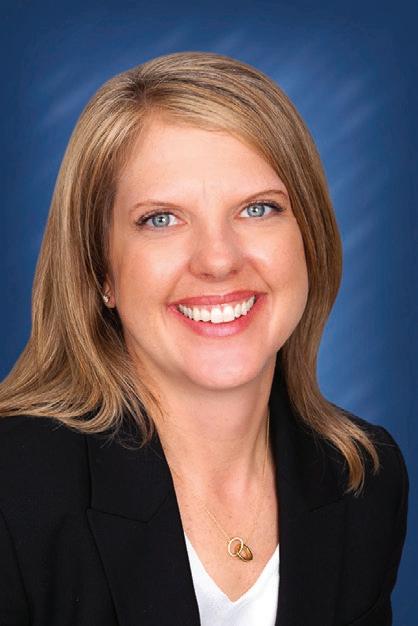
“Government that wants healthy communities should be investing in this work,” CdeBaca said. “Their failure to support meaningfully in an ongoing fashion speaks volumes about their priorities and the continued trend of which communities can be sacrificed.”
Cultivando confirmed they have looked into multiple additional funding sources to no avail yet.

According to Rebecca Curry of Earthjustice, one possible contributor to fewer state funding options for groups like Cultivando is the lack of financial penalties obtained by CDPHE against Suncor in the years since the 2020 settlement. Given the original SEP grants for Cultivando were funded by the settlement, more financial penalties obtained by CDPHE for repeated pollution violations since then might have generated more revenue to be used for local pollution monitoring.
A spokesperson at CDPHE confirmed that although the state has issued several compliance advisories that could eventually yield financial penalties, such actions are all still pending. No timeline of potential closure was offered.
In a closing statement, Cultivando said, “If the state does in fact care … about the health of its disproportionately impacted communities, then it will do everything in its power to protect them from continuous harm.”
ry Tours to visitors," said Greg Rowley, board president and tour coordinator of Historic Elitch Theatre. "The theater has such a rich and fascinating history, and we are excited to be able to share it with our neighbors and visitors. Whether you're a theater buff, a history enthusiast, or just looking for a fun and educational activity, these tours are not to be missed.”
"The theater has such a rich and fascinating history, and we are excited to be able to share it with our neighbors and visitors.”
– Greg Rowley, board president and tour coordinator of Historic Elitch Theatre“The Historic Elitch Theatre has a long and fascinating history dating back to 1890 when John and Mary Elitch opened Elitch's Zoological Gardens," Rowley continued. “One year into this endeavor, with the theatre built after that first summer, John Elitch passed away and Mary Elitch became the first woman in the country to run a zoo. While she wasn’t the first woman to run a theatre, and it is unclear if she was the first woman to run a botanic garden, she was certainly the first woman ever to do all three.”
The tours run on the first Friday of the month from June through October, which coincides with the First Friday activities on Tennyson Street. Tours start at 6 p.m. and 7:30 p.m. and the $15 tickets can be purchased through Eventbrite, or walk-up attendees are welcome.
For more information about the History Tours, or to book tickets, visit HistoricElitchTheatre.org/eventsprograms/tours
“Government that wants healthy communities should be investing in this work. Their failure to support meaningfully in an ongoing fashion speaks volumes about their priorities and the continued trend of which communities can be sacrificed.”
– Candi CdeBaca City Councilwoman













